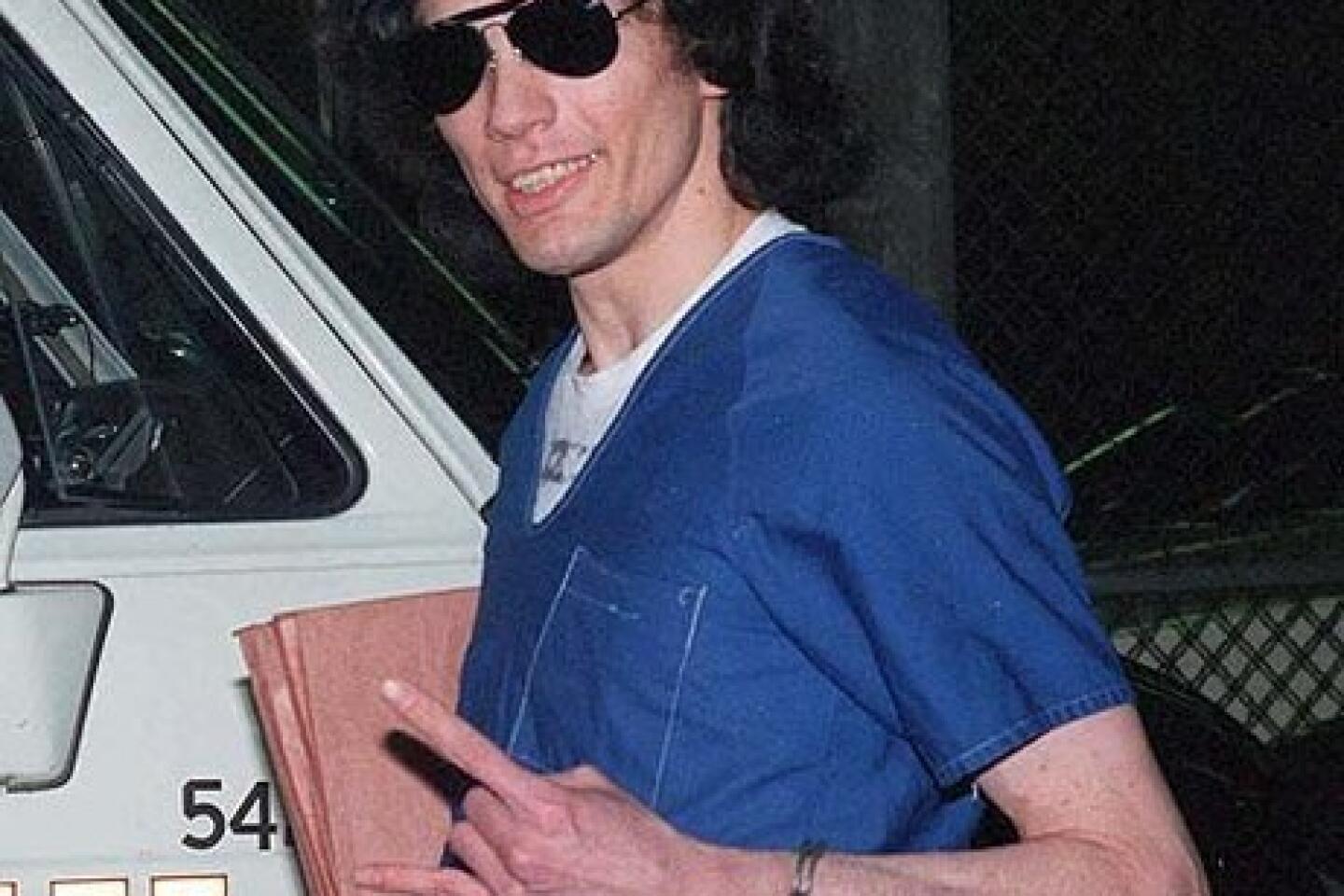The unsavory ‘murderabilia’ market
I didn’t know much about the bizarre U.S. market in “murderabilia” until I became an unwitting part of it. But I now know more than I’d like to about the buying and selling of souvenirs linked to gruesome murders.
My encounter with the market came after a copy of my book, “Lost Girls,” which chronicles the rape and murder of San Diego-area teenagers Chelsea King and Amber Dubois, showed up on a website fittingly called darkvomit.com. It was autographed by the murderer.
On the page opposite my dedication to his two victims, sexual predator John Gardner had written: “I’m sorry for all the pain that I have caused,” and signed his name. Because of Gardner’s inscription, a paperback that normally sells for $7 was being offered for a whopping $275.
PHOTOS: California’s most notorious killers
Darkvomit.com, one of at least half a dozen U.S. murderabilia websites, is run by San Diego dealer Kelly Hutchison. I learned that he was hawking my book when I started getting calls from the media. I was disturbed, but I soon realized there wasn’t much I could do. People want to buy this stuff, and the market has expanded because of the Internet, which allows them to shop for it privately.
Andy Kahan, a victims’ advocate from Houston, has made it his personal mission to expose and, ultimately, he hopes, stop the unsavory trade. He says he’s seen all kinds of artifacts offered for sale, including murderers’ artwork, fingernail clippings, used deodorant, even trimmings from Charles Manson’s hair shaped into a swastika.
It’s hard to fathom what motivates collectors of murderabilia, but I do understand the fascination with murder itself. As an author, I research and write about murder cases to try to understand what motivates killers to commit horrible, violent acts against other human beings. I think it’s important in our too-violent culture to examine the larger societal issues involved. I’m also interested in educating readers about how the justice system works, and how law enforcement and attorneys on both sides put their cases together.
But the public isn’t always looking for lessons. People want to be entertained, and murder has become an abundantly popular subject for novels, movies and TV shows. An entire channel, Investigation Discovery, is dedicated to the topic.
In that context, it’s not surprising that dealers are seeking to profit from selling grisly collector’s items.
Kahan is doing his best to make the trade socially unacceptable. After successfully persuading EBay to remove murderabilia items from its site, he is now trying to get Facebook to clamp down on all murderabilia pages, including Serial Killers Ink, whose postings include grisly crime scene photos of naked, decomposing women who were bludgeoned with a hammer and stuffed into 55-gallon barrels. The page also shows a drawing by a convicted murderer and rapist, portraying a half-naked nun giving oral sex to Jesus on the cross. But so far, Facebook has refused to remove the material.
The murderabilia trade is mostly legal (only eight states currently have laws regulating or banning it), but Kahan keeps looking for ways to impede it. He has corresponded with killers, including David Berkowitz, to explore how items offered for sale get out of prisons and into dealers’ hands. He says he’s heard about dealers who work just like sexual predators, grooming killers through the mail and during prison visits. Items are then handed over or mailed, and are often traded among dealers. Profits are sometimes shared with the killers.
I wanted to ask Hutchison how my book came to be autographed by Gardner and offered for sale on his website, but he didn’t respond to my interview requests. Gardner told officials at Corcoran state prison, where he is serving a life sentence, that he got the book from his mother and sent it out. But she told me she thought it came from my publisher. Prison policy dictates that books must be sent directly from the publisher or they are considered contraband.
Corcoran spokesman Lt. Anthony Baer said a book with such a notation should have been flagged and confiscated. If Gardner put it in the outgoing mail, he said, “that’s our bad, because obviously the cops didn’t catch that.... They probably just thumbed through it and it went out.”
The trade in murderabilia trivializes and even celebrates tragedy, causing further pain to victims’ families. But it will continue as long as a market exists. The public can express its outrage and pressure prisons to be more vigilant about stemming the flow, but the most effective way to stop these sales is even simpler: Just don’t buy the stuff.
Caitlin Rother has written or coauthored nine books, including “Lost Girls” and “Poisoned Love.”
More to Read
A cure for the common opinion
Get thought-provoking perspectives with our weekly newsletter.
You may occasionally receive promotional content from the Los Angeles Times.








